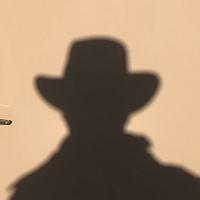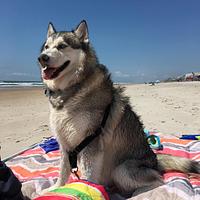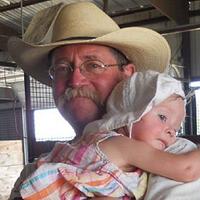Share your craft projects
Make new craft buddies
Ask craft questions
Blog your craft journey

Smitty
432 posts
and
27 followers
in over 11 years
in over 11 years
The Stanley 444 #1: An Overview
This is
part 1
in a
3 part
series:
The Stanley 444
-
An Overview
-
Set Up
- An Overview
- Set Up
An Overview
Welcome to Part One of a short blog series that is a hands-on presentation of the Stanley #444 Dovetail Tongue and Groove Plane, a tool that was available for a relatively short time and is a rarity in today's marketplace. Offered by Stanley from 1912-1938, the plane is infrequently listed for sale on eBay with a collector's price tag. My example had a few parts missing and features a cracked (and repaired, but still cracked) fence, so the plane is not collector material. And like every tool in my shop, this one is not for static display (unlike the one above, not mine BTW).
So I've had this plane since June 2012, plus or minus a couple weeks, and after more than a few hours and several false starts I was able to produce my first sliding dovetail assembly in March 2013. Why so bloody long, you ask? Lots of reasons, really, but let me say this: Aside from the Stanley manual and my own experience with a couple of somewhat-similar hand planes (the #78, #278 and #50 come to mind), insight has been hard to come by. As in, can anyone share a website or blog that talks about using the #444? I could not find one, and decided to fill the void.
As with any substantive subject, it's important to get everyone on the same page rhetorically. To the documentation, then, for a review of the basics.
Anatomy of a Sliding Dovetail Joint
Straight from the plane's manual comes this graphic (Figure 1, thanks Stan Faulin!):
Looks simple enough, right? We all know what dovetails look like and how sliding dovetails function. And the part about it sliding helps us move pretty easily past the Parallel vs. Tapering graphic… tapered grooves are useful when it comes to pulling the pieces together; a groove that moves tighter to the fit towards it's end is a good feature when executed properly. The point of including the set of Dovetail Joint images, then, lies in the depiction of shoulders, neck and depth. Why are these terms important? Simple. We have to be on the same page when it comes to various settings and adjustments to be made when using the plane. For example, two cuts at the end of a board create the dovetail portion of the joint (depicted as First Cut 6 and Second Cut 7 in Figure 2).
Each of these cuts produces shoulder measurements that, 1) Should match; and 2) Establish the dovetail's neck and depth. The neck and depth must be repeated in the groove, or the resulting joint will be subpar. I'll let that sink in a while.
.
.
.
.
.
.
.
.
Okay, ready to move on? (We'll talk more on neck and depth later, I promise!)
Key Components of the #444
-Fences
The parts list for the #444 includes two fences; the smaller of the two installs with its base set at a 90 degrees to the body of the plane. Blood and Gore calls this piece a depth stop, and it's easy to see why once we get to set up. The plane's manual calls the smaller fence the SQUARE FENCE, however, so that's what I'll call it, too.
The larger fence is also L-shaped, but with an obtuse vs. right angle. It is referred to in the manual as the BEVEL FENCE. It also differs from the other in that it can be mounted to either side of the plane in either of two different ways.
The bevel and square fences can each attach to the left side of the plane at the 'T-Bolt,' with a range of motion (yes, each fence moves) limited by said bolt and a sliding depth gauge. The setting of the depth gauge determines depth of the groove OR the dimension of dovetail shoulder depending on the cut being made and fence(s) being used at the time.
-Fence Arms
The #444 ships with a pair of short rods (the manual quaintly refers to them as "Fence Arms"…) unique to this plane. Actually, I think the rods for a #46 skewed plough plane could work with the #444, but buying that plane for rods is crazy talk. This plane's rods have a diameter that is unique, as well as a thread count that is non-standard (even for Stanley, and they raised non-standard to an art form). If your #444 needs 'fence arms', contact the St. James Bay Tool Company and they'll make a pair.
There are two sets of holes in the body of the plane threaded to accept said rods (Upper and Lower holes), and it appears at this point the rods are only joined to the right side of the plane. "…the upper holes being used for small tongues and the lower for large," says Stanley. If I find cutting operations that benefit from left-placed fence arms, I'll pass it along.
Oh, and make sure the threaded portion of the rods you find (or have made) aren't too long, or they'll interfere with the sliding action of the square fence when cutting tails.
The protruding threads were addressed, btw.
-Cutters
Three irons (Stanley refers to them as cutters) shipped with the plane for cutting grooves and each is honed at a 7 ½ degree skew as marked on the original cutter box. Stanley suggests transferring the line from the cutter box to a bevel gauge (Figure 3), and in turn checking the cutters for proper skew at each sharpening as shown. The groove cutters are called small, medium and large.
There is a larger cutter that looks like a groove cutter but it isn't (and it hates it when you call it one, BTW). It's identified in the manual as a tongue cutter, and is used only for that operation, because an iron with a longer cutting edge is required, depending on the dovetail's depth.
Confused? Then I shouldn't mention the choice of groove cutter depends on the neck of the groove to be cut. Per the manual, 'Select the widest groove CUTTER which can easily pass through the neck." Sounds simple enough, right?
NOTE: All of this is befuddling, I realize. And I've pondered several ways of presenting these details so as avoid confusion. But it's somewhat difficult by nature, as any complex subject is. So while I'm toying with you a bit, it's to keep you entertained (hopefully) as the 'information baseline' is being set. So, let's move on!
-Spurs and Spur Blocks
If the Devil is in the detail, welcome to Satan Incarnate. If you've not gained a healthy disdain for spurs (otherwise known as nickers) on any of Stanley's other offerings to date, your patience is about to be tried. Four spurs are included with the plane as shipped: two on the body and one each on the two included spur blocks. Some have a retracted position; others have to be removed to get them out of the way. Here's a pic of the right body spur up and out of the way….
The spur on the left side of the plane is either used or not, and sets the left edge of grooves and tails. There are three spurs designed for action to the right of the main body of the plane, and are deployed to match up to the right side of the groove cutter being used (a right side spur is not needed when cutting tails). We'll sharpen spurs (yee-haw!) and take them through their paces later.
As noted on Blood and Gore, if you wear down these spurs through over sharpening (or weren't lucky enough to have them included with your purchase), that's bad news. The spurs of the #444 were otherwise only available on the #10 ¼ and #289, and you don't need to be buying those to scarf spurs. So make sure yours has them and sharpen carefully, okay?
A picture showing the #444 with cutters and spur blocks can be found at the bottom of this Post.
-Other Unique Parts
The picture below is provided (along with a few syllables) in an attempt to explain several parts of this plane that had me scratching my head at first.
The largest circle-shaped thing is the plane's T-Bolt. Either the BEVEL or the SQUARE FENCE can be affixed to the plane by sliding it over the T-Bolt. Just below and to the left of the T-Bolt, partially obscured, is the Slide Slot Stop Screw. Either fence is designed to travel up and down the left side of the plane; the Stop Screw limits the ability of either fence to spin around the T-Bolt. The thumbscrew in the picture threads into the sliding depth gauge, which limits the upward travel of the attached fence (in turn limiting the depth of cut… think about it…) And at the top of the 'bump' of the plane, see picture below, is the T-Bolt set screw. The head of this screw is set into the body of plane. Set the T-Bolt so there's not much slop in the travel of the fence, and tighten the set screw to keep it there.
Each fence should have its own sliding depth gauge. Alas, my fences have to share a single copy of said gauge, which is why you might see pics of a fence without a gauge. That said, if anyone out there has an extra sliding depth gauge in inventory, please contact me ASAP. I'm getting a bit ahead of myself here, because each of these parts will be presented again in the Fettling section of the next installment. But I did want to introduce them here.
A Critical Piece of the Puzzle
A Critical Piece of the Puzzle
A final note to be made in this initial installment has to do with packaging. Yes, the folks at Stanley Works included a 'blueprint' inside the chestnut boxlid of the #444 that detailed the anatomy of dovetail depth, neck and shoulder measurements based on common stock sizes. The version that is on the underside of my box lid has flaked a bit and is otherwise incomplete. It looks like this.
After considerable searching, however, and thanks to the OldTools list and Matt Turner, I have a version of these drawings that was supposedly put inside the plane's box in it's later sales window. The outside of the three-fold:
And the inside:
This data lets me set these measurements and get (hopefully) repeatable results with less trial and error. We'll see.
Wrap-Up of Part One!
Well, that's a tour of the Stanley #444. We've covered its purpose and its parts, and added a few observations along the way. If you have one of these tools, you likely know these things. If you have one and didn't know much about it, you haven't used it and that's a shame. If you don't have one, you're likely confused but hopefully still interested in learning more. And that's what we'll continue with in Part Two: Set-up.
Sounds like fun, right? After fettling, we might actually cut wood. A whole installment dedicated to fettling? Yep. The #444 in this regard is a lot like its bench and joinery plane brethren: without 'doing' fettling, the plane simply will not work well (if at all). Much to be explored on this plane, then, but I've only laid out a three-part blog. Until next time, thanks for looking!
Don't anthropomorphize your handplanes. They hate it when you do that. - OldTools Archive -
4 Comments
I looked for a 444 for a while, then settled on buying an ECE dovetail plane. Interested to read the rest so I can compare to what I know about that.
May you have the day you deserve!
Glad you brought this blog over Smitty. One of these days I will get to using the 444
It had to come over - too much work to let die...
Don't anthropomorphize your handplanes. They hate it when you do that. - OldTools Archive -
Thanks Smitty, I'm really enjoying this, again.
"Duck and Bob would be out doin some farming with funny hats on." chrisstef











